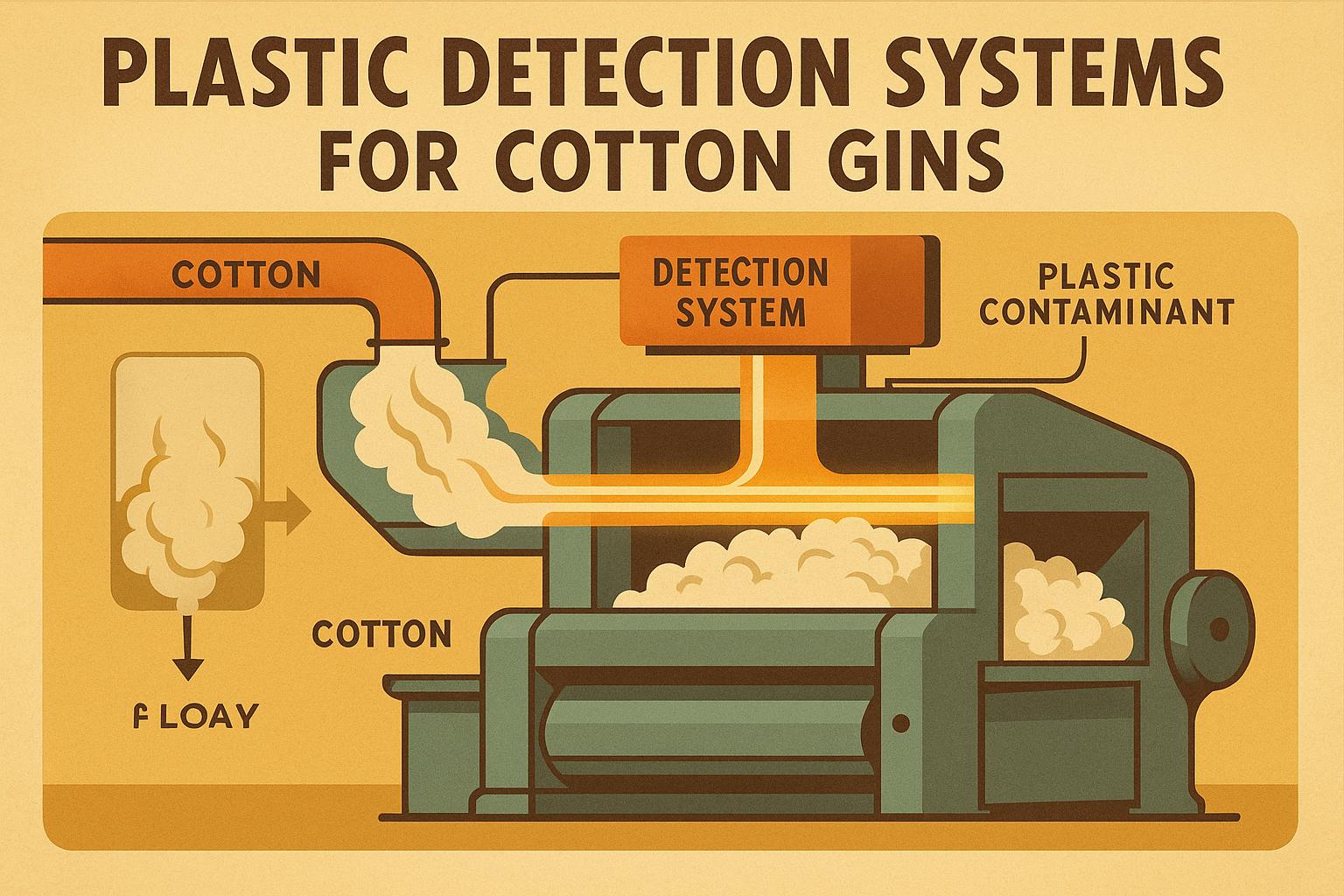Executive Summary (TL;DR)
- Preserve seed value: keep seed cool and dry (target 10% moisture, 50–60°F), test viability before planting, and use simple on-farm drying/aeration routines to avoid storage losses.
- Practical on-farm protocol: sample & test lots, sort by moisture, aerate or move wet lots, store in moisture-proof bays, and monitor temps weekly to catch hot spots early.
- Action plan for the season: implement a 6-step seed-handling SOP that fits small and mid-size farms — saves seed, reduces replant risk, and protects seed value.
Related Post: For early-season stand gains, check Best Practices for Improving Cotton Seedling Vigor.
Why Cotton Seed Storage Matters
For most cotton farmers, seed is both the beginning and the bottleneck of each season. You can prep your rows, watch the weather, and pray for rain — but if the seed itself is tired or damaged, you’ll never start strong.
Every year, millions of pounds of carry-over cottonseed quietly lose value because they’re stored like fertilizer instead of like grain. Heat, moisture, and time all work against you. But with a few low-cost adjustments, most of that loss is preventable.
Good storage isn’t about fancy infrastructure. It’s about control — control of moisture, temperature, and air flow.
Understanding Cotton Seed Deterioration
Cottonseed is a living organism. Even after harvest and delinting, the embryo inside remains alive. That means it respires — slowly consuming oxygen and releasing moisture and heat.
Over time, this natural process breaks down the oils and proteins that support germination.
The main enemies are:
- Moisture: Cottonseed stored above 12% moisture will self-heat.
- Temperature: Every 10°F rise in temperature roughly doubles the respiration rate.
- Oxygen restriction: Piling seed without ventilation traps heat, creating localized “hot spots.”
- Mechanical damage: Split hulls or cracked seed coats accelerate moisture exchange.
Even premium seed can lose 15–20% germination potential in a few months if conditions swing too warm or too wet.
The Science of Safe Storage Conditions
From decades of research at Texas A&M and USDA’s Southern Plains labs, the rule of thumb is simple:
Keep cottonseed below 10% moisture and under 60°F whenever possible.
If both are met, cottonseed can remain viable for up to two years with minimal quality loss.
| Condition | Ideal Range | Effect on Seed Viability |
|---|---|---|
| Moisture Content | 8–10% | Safe long-term storage |
| Storage Temperature | 50–60°F | Best balance for germination |
| Relative Humidity | 50–60% | Prevents reabsorption |
| Oxygen | Normal air exchange | Prevents fermentation |
A lot of folks forget that moisture and temperature are connected. High moisture plus high heat means internal respiration skyrockets — and that’s when seed starts to self-destruct.
Step-by-Step: On-Farm Cotton Seed Storage Protocol
Here’s a straightforward six-step SOP I use when advising small and mid-size growers who store their own planting seed or whole cottonseed for feed.
1. Sample and Test Every Lot
Before storage, pull representative samples from each truck or trailer.
Use a handheld moisture meter calibrated for cottonseed (or send to your gin lab).
Record:
- Moisture content
- Temperature at sampling
- Approximate weight of lot
Any lot above 12% moisture should be flagged for drying or immediate use.
2. Dry or Aerate Wet Lots
If moisture runs high, the simplest approach is aeration — moving air through the pile using low-volume fans.
- Target air flow: 0.1–0.2 cubic feet per minute per bushel
- Run during cool, low-humidity hours (usually overnight)
- Avoid direct sun on the pile — it can cause surface drying and deeper condensation
A temporary tarp setup with a small plenum and fan can save thousands in spoiled seed.
3. Store in Moisture-Proof Bays or Bins
Where possible, keep seed off concrete and away from walls that “sweat.”
Use pallets, plastic liners, or even old feedbags under the base layer to break the thermal bridge.
If you’re using bulk commodity sheds:
- Install curtains or roll-down doors to block humid air in summer.
- Stack seed in a trapezoid shape (wide base, narrow top) for even air distribution.
- Avoid heights greater than 12 feet unless aeration is continuous.
4. Control Temperature Year-Round
If you can’t control humidity, at least control temperature.
- For short-term storage (under 60 days), ambient conditions are fine.
- For long-term (3–12 months) use, passive vents or fans are used to remove heat buildup.
If you’re in Texas, Georgia, or Arizona, consider storing seed in north-facing sheds or under reflective roofing material to lower the average inside temperature by 10–15°F.
5. Monitor Weekly
Create a simple chart with temperature probes and moisture readings.
Stick a 36-inch thermometer into the pile at multiple depths (top, middle, base).
Log data every 7 days:
- Temperature rise of >5°F in one week? Aerate immediately.
- Moisture creep above 12%? Move or dry that lot.
- Any musty odor or condensation? That’s microbial activity — act now.
This habit alone can extend viable storage by months.
6. Re-Test Germination Before Planting
Before the next season, run a warm germination test (most local extension offices or labs offer it).
You can also do a simple field check:
- Count out 100 seeds.
- Wrap in damp paper towels.
- Keep warm (~85°F) for 5 days.
- Count seedlings.
If less than 85% germination, adjust your seeding rate accordingly or blend with fresh seed.
How Carry-Over Cottonseed Loses You Money
Farmers often overlook the silent cost of poor storage. Consider this quick math:
- You stored 20,000 pounds of seed worth $0.55 per pound = $11,000 total.
- After six months, germ drops from 95% to 75%.
- That 20% loss effectively costs $2,200 — and you may not even notice until you’re replanting.
Proper storage is one of the cheapest forms of insurance you’ll ever buy.
Common Mistakes Farmers Make
Here’s what ruins more cottonseed than anything else:
-
Storing seed directly on concrete.
Concrete sweats and wicks moisture from the ground. Always use a barrier. -
Ignoring airflow.
Piles deeper than 10–12 feet trap heat. -
Leaving seed in open trailers.
Even a few days of humidity swings can drive condensation inside bags. -
Using the wrong moisture meter.
Grain meters calibrated for corn or wheat can read 2–3 points off for cottonseed. -
“I’ll test it later.”
Delaying testing until planting is like guessing your tire pressure by kicking the tire.
Example: West Texas Grower Case Study
A West Texas producer stored 40,000 lbs of planting seed over winter in an unvented metal building.
By April, he noticed musty smells and visible condensation on the walls.
Initial moisture: 11.5%
Temperature at mid-pile: 82°F
Germination test: Dropped to 69%.
After installing two small 12-inch aeration fans, resealing cracks, and lowering the pile height, his next season’s stored seed held 92% germination after 5 months.
That single change paid for itself in one season.
Beyond Seed Storage: Handling Cottonseed for Feed
Many farms store whole cottonseed for feed rather than planting.
While feed seed doesn’t need to germinate, rancidity and mold are still real threats.
Key differences:
- Moisture can be slightly higher (up to 13%) without hurting feed quality.
- Ventilation is still essential to prevent spoilage and mycotoxin growth.
- Storing under cover and off the ground remains non-negotiable.
If the seed is for dairy feed, limit storage to 90–120 days max.
Testing Tools Worth Owning
These three tools make or break a storage operation:
- Cottonseed moisture meter — not a generic grain meter.
- Probe thermometer — 36-inch model with digital readout.
- Data log sheet or spreadsheet — consistency matters more than fancy automation.
Optional upgrade: Bluetooth temperature loggers ($100–150) that graph changes automatically.
How to Estimate Carry-Over Risk (Quick Formula)
A simple way to gauge expected viability:
Germination Loss (%) = 0.5 × (Storage Temp °F − 50) × (Moisture % − 8) × (Months Stored ÷ 12)
Example: 75°F average, 11% moisture, 6 months stored
= 0.5 × 25 × 3 × 0.5 = 18.75% potential loss
That’s the power of getting both numbers under control early.
The Business Case for Better Storage
If you typically store your own seed, a small investment in airflow and monitoring goes further than most realize.
Example ROI calculation:
| Upgrade | Cost | Payback Period |
|---|---|---|
| Two 12-inch fans + plenum | $800 | 1 season |
| Moisture meters (2 units) | $250 | 1 season |
| Pallet floor & tarp liner | $300 | Immediate |
| Data loggers (optional) | $150 | 1–2 seasons |
Even a 5% improvement in germination easily covers those costs.
Checklist: 6-Step Cotton Seed Storage SOP
- Test every load before storage (moisture, temperature).
- Aerate any seed above 12% moisture.
- Store off the ground on pallets or barriers.
- Monitor weekly (temperature + moisture).
- Keep records in a simple log.
- Re-test germination before planting.
Tape this checklist to the inside of your shed door. It’s worth its weight in seed.
Key Takeaways
- Seed is a living input — treat it that way.
- Dry, cool, and monitored seed stays viable longer.
- A few low-cost changes (fans, pallets, probes) protect thousands of dollars of value.
- Keep notes, run simple tests, and avoid surprises come planting.
A little discipline between seasons pays off all year long.


